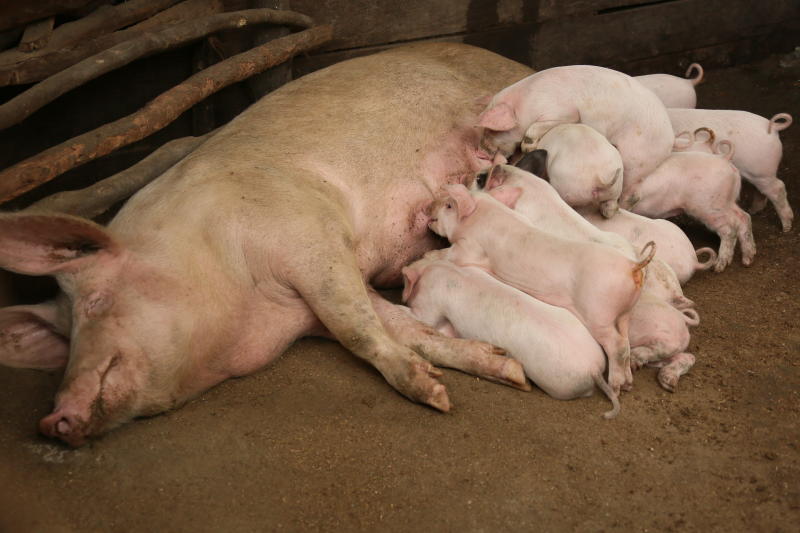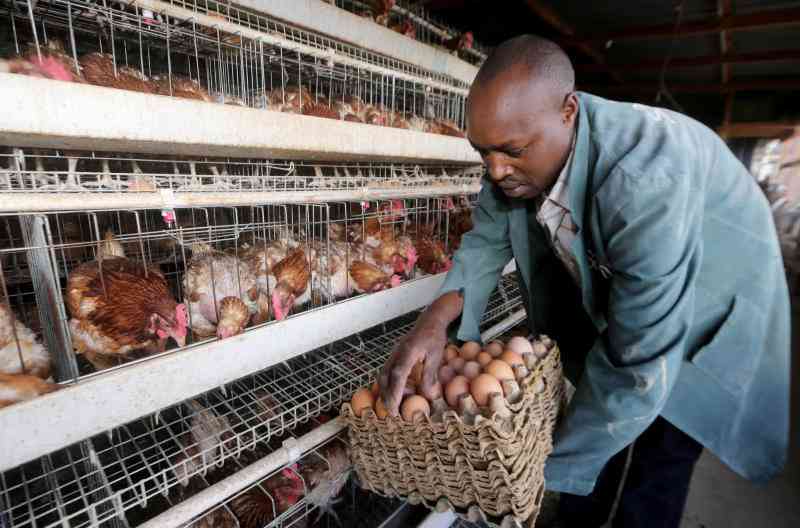
Alice Karaya is counting down the days till she can reap from her newly established pig unit at her farm in Kieni Constituency.
Ms Karaya has 14 five-month old piglets and four adult pigs; three sows and a boar on her farm. “I embarked on pig farming in June 2018, as one of the beneficiaries of the county government project to empower small self-help groups in Kieni and Mukurweini constituencies,” she said.
As part of one of the groups, Ms Karaya underwent a month long training before each group was issued with two pigs (a sow and boar) to kick off the project.
“In our Mwireri Self-help group, my farm was selected to host the two pigs. After they gave birth, each of the 15 members got their own pair to take back to their farm and continue farming,” Ms Karaya explained. Of the 15 members, 10 have already received their pair of pigs and have started pig farming.
When they started out, members contributed to feed the animals until they reached maturity.
“I did not mind keeping the pigs for the group because they are not labour intensive. Once you feed and clean their living areas, you can tend to other duties without having to employ someone to care for them,” she said.
A retired civil servant, this is her third year in farming and she has several other farming projects on her farm including poultry, fish ponds, maize, rabbits and dairy cows and goats.
Housing structure
To reduce mortality rates caused by pigs sleeping on their piglets, Ms Karaya has made special alterations to her pig cubicles. Each pen is fitted with wooden cages known as creep areas which are big enough to allow the piglets in but small enough to keep the mother out, offering shelter to the pigs when feeding.
“The piglet creeps have been lined with blankets to keep them warm especially at night to avoid pulmonary diseases,” she said.
The housing structure for pigs should include a dark and a well-lit area.
“Pigs prefer a well-lit area to excrete and a dark area to rest and sleep. So pig houses should have a well-lit corridor with access to automatic water feeder to ensure the house is not damp or wet,” said agribusiness expert James Muchiri.
Prevention of diseases
When the piglets are born they are vulnerable to diseases and death and the cages protect them for at least three months allowing them a safe and warm place to sleep at night.
To stay healthy, piglets should be given an iron injection after three days and should be protected from pneumonia which Muchiri said is dangerous.
“The most dangerous disease that can affect pigs is African Swine Flu which can infect a whole drove of pigs, and would require culling of the remaining animals and quarantine for three months,” Muchiri warned.
Despite cultural and societal beliefs about the hygiene of pigs, Ms Karaya says the animals are clean.
“Pigs are very clean animals and their pens are cleaned every day. The animals also need plenty of clean water in their troughs which I ensure is provided every day,” Ms Karaya said. The pig farming business is lucrative as Ms Karaya admitted that at two months of age one piglet can be sold for Sh3,000 while those animals kept for animal production can be sold for Sh250 per kg depending on the negotiated price.
She keeps a breed of pig called Landrace which are considered good mothers to their offspring.
When identifying the right breed, one must consider the purpose, either breeding or slaughter. “My pigs have a good number of tits and it takes eight months to reach full maturity but even at seven months you can sell them,” she said.
Muchiri however clarified that there are no pure breeds of Landrace or Large White pig breeds in Kenya currently. “Breeds currently in the country are not pure but soon farmers will have access to pure breeds if Artificial Insemination techniques to introduce the pure breeds are successful,” he said.
Poor quality feeds
The two breeds are preferred because they are fast maturing and achieve slaughter weight within six months. However due to poor quality feeds in the market, pigs take eight not nine months to mature.
“The poor quality of feeds brings big losses to farmers. Those additional months needed to get the pigs to slaughter weight eat into their profits,” he explained.
He said the ideal slaughter weight of pigs is 80kgs live weight and 60kgs after slaughter.
Want to get latest farming tips and videos?
Join Us
 The Standard Group Plc is a multi-media organization
with investments in media platforms spanning newspaper print operations,
television, radio broadcasting, digital and online services. The Standard Group
is recognized as a leading multi-media house in Kenya with a key influence in
matters of national and international interest.
The Standard Group Plc is a multi-media organization
with investments in media platforms spanning newspaper print operations,
television, radio broadcasting, digital and online services. The Standard Group
is recognized as a leading multi-media house in Kenya with a key influence in
matters of national and international interest.
 The Standard Group Plc is a multi-media organization
with investments in media platforms spanning newspaper print operations,
television, radio broadcasting, digital and online services. The Standard Group
is recognized as a leading multi-media house in Kenya with a key influence in
matters of national and international interest.
The Standard Group Plc is a multi-media organization
with investments in media platforms spanning newspaper print operations,
television, radio broadcasting, digital and online services. The Standard Group
is recognized as a leading multi-media house in Kenya with a key influence in
matters of national and international interest.








